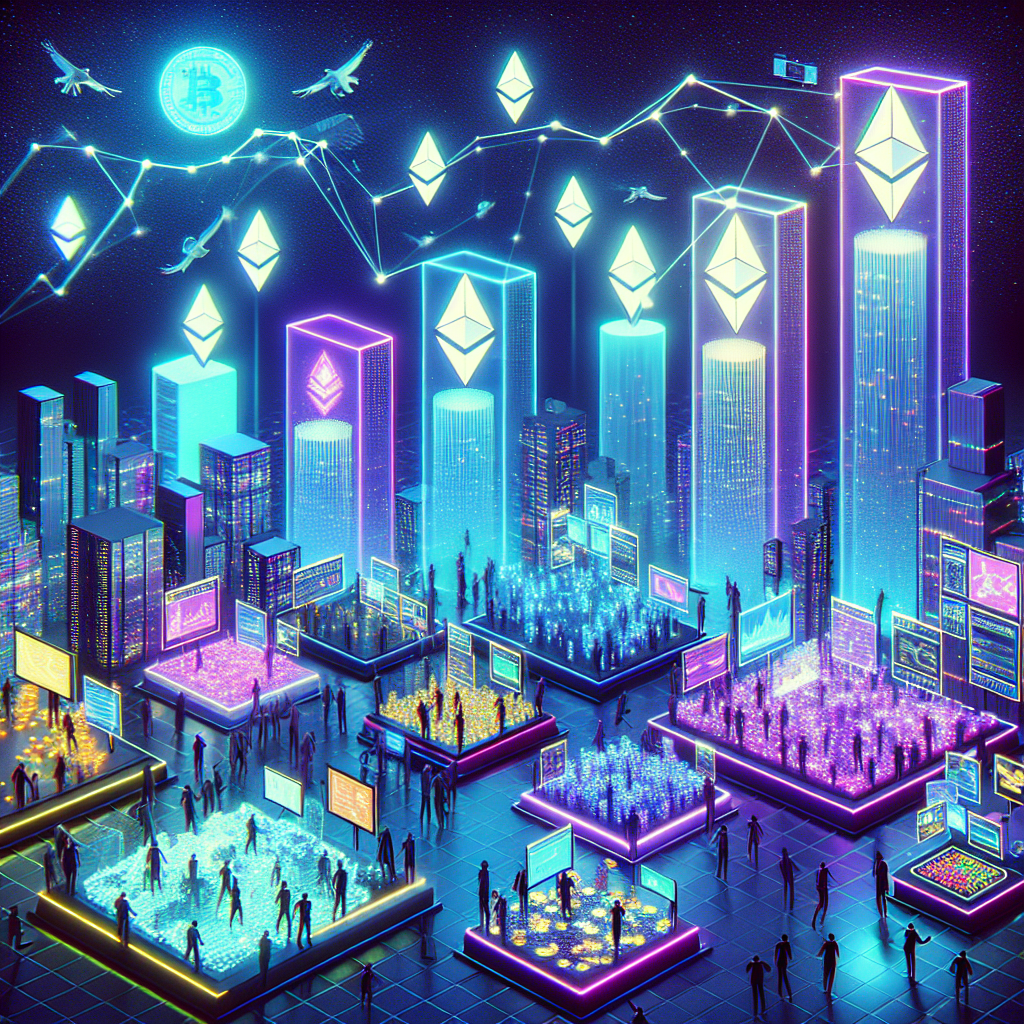Polygon NFTs Surge Past Ethereum in Weekly Sales Volume
In a surprising twist in the non-fungible token (NFT) landscape, Polygon has overtaken Ethereum in weekly sales volume. This dramatic shift highlights not only Polygon’s growing prominence in the blockchain sphere but also the rising interest in real-world assets (RWA) fueled primarily by the innovative Courtyard collection. In this article, we will delve into the factors behind this surge, the implications for the NFT market, and what it means for collectors and investors alike.
The Rise of Polygon NFTs
Polygon’s blockchain has been making waves in the NFT world, particularly this past week when it outperformed Ethereum – long viewed as the reigning champion of NFT sales. According to recent data, Polygon recorded over $28 million in NFT sales, eclipsing Ethereum’s $27 million, which represents a significant milestone for Polygon.
Why the Shift?
Several factors contribute to this remarkable shift from Ethereum to Polygon in NFT sales volume:
- Lower Transaction Fees: One of the hallmarks of Polygon is its ability to offer significantly lower transaction fees compared to Ethereum. This affordability attracts more creators and collectors to the platform.
- Scalability: Polygon boasts a highly scalable framework, allowing for faster transaction speeds and improved user experience. This feature is particularly appealing in a market where every second counts, especially during major drops.
- Innovative Collections: The rise of unique collections like Courtyard, which allows users to invest in real-world assets, has invigorated interest and participation in the Polygon ecosystem.
- Growing Ecosystem: A burgeoning ecosystem of developers and creators is flocking to Polygon, creating a thriving marketplace that meets the diverse needs of NFT enthusiasts.
What is the Courtyard Collection?
At the center of this surge lies the Courtyard collection, which has become a beacon for collectors interested in the intersection of intangible digital assets and tangible real-world value. Courtyard allows users to purchase NFTs representing ownership stakes in various real-world assets.
The Appeal of Real-World Assets
Real-world assets are drawing considerable interest from investors for several reasons:
- Stability: Unlike traditional cryptocurrencies, RWAs are often tied to stable physical assets, providing a level of security for investors.
- Diversity: The ability to diversify one’s portfolio by investing in both digital assets and tangible properties can mitigate risk.
- Accessibility: Tokenizing real-world assets makes them more accessible to a broader range of investors who may not have been able to invest in these sectors previously.
As this collection garners more attention, it further enhances Polygon’s position as a formidable player in the NFT arena.
Implications for the NFT Market
The pivot toward Polygon NFT sales signals a broader trend that could reshape the NFT landscape. Here are a few implications that this shift denounces:
1. Increased Competitive Dynamics
With Polygon now a key player in the NFT space, Ethereum may have to rethink its strategies. The competitive pressure could lead to:
- Innovations: Ethereum could prioritize developments in scalability and transaction cost reductions.
- Enhanced Features: New tools and features could be introduced to keep pace with Polygon’s advances.
2. Market Sentiment
Investors and collectors might start to reconsider their portfolios. A shift to Polygon could indicate a broader acceptance across the blockchain community, influencing sentiment and potentially driving greater investments toward NFTs.
3. Diversification of Platforms
With Polygon’s success, we might see an influx of new and emerging platforms vying to capture part of the NFT market, offering varied ecosystems for their user bases.
How to Engage with Polygon NFTs
For those interested in joining the wave of success that Polygon is experiencing within the NFT space, here are a few steps you can take:
- Research Collections: Start by exploring various NFT collections available on the Polygon network. Familiarize yourself with platforms such as OpenSea and Rarible that support Polygon-based NFTs.
- Join Communities: Engage with online communities on platforms like Discord and Twitter, where artists, collectors, and developers discuss news, trends, and upcoming projects.
- Invest Carefully: Whether you are a seasoned investor or a newcomer, always prioritize due diligence before purchasing NFTs. Look into projects, their roadmaps, and potential utilities for the NFTs.
Final Thoughts
The surge of Polygon NFTs surpassing Ethereum in weekly sales volume marks a pivotal moment in the realm of digital assets. As the integration of RWAs gains traction through innovative collections like Courtyard, more users are likely to explore the benefits provided by the Polygon network.
This shift not only boosts user engagement for Polygon but also pushes Ethereum to adapt to a rapidly changing landscape. The ongoing evolution within this space showcases the exciting possibilities that lie ahead for both collectors and investors in the NFT ecosystem.
As we venture into a new era of NFTs, keeping an eye on public sentiment and market dynamics will be essential for anyone looking to navigate this thrilling landscape. Whether you’re a collector looking for the next big thing or an investor seeking diversification, the rise of Polygon could be a game-changer in the upcoming months.




